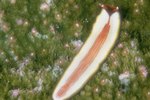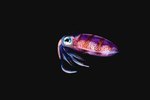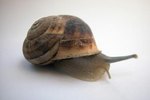
"Mollusca" is the name of a phyllum of marine invertebrates, which are essentially sea creatures that do not have spinal columns. Living organisms that are part of this phylum are referred to as mollusks. When it comes to the biggest mollusks around, the giant clam (Tridacna gigas) has everyone else beat, big time.
Giant Clam Size
Giant clams are the world's biggest mollusks, period, according to the National Geographic. These massive carnivorous creatures are often capable of exceeding 500 pounds in weight, with body lengths of just around 4 feet.
Giant Clam Habitat
Giant clams reside in the Indian Ocean, the Red Sea and also in the South Pacific. These bivalve mollusks spend their time in tropical shallow waters, often in reef flats and lagoons. They are generally no further down than 20 meters below the top of the water. Giant clams are frequently amidst sponges and corals.
Giant Clam Diet
Giant clams have the ability to filter both sustenance and H20, just like most animals in the bivalve mollusk category. The filtration process occurs via the gills. A couple of common elements of the giant clam diet are zooplankton are phytoplankton. However, most of a giant clam's nutrition is derived courtesy of its own tissues' proteins and sugars. These proteins and sugars come from the massively high numbers of algae that make their homes within these tissues.
Physical Appearance of the Giant Clam
Giant clams do not only have enormous size to offer, but also very bright coloration. These immobile mollusks' mantles typically are green, yellow or brown, and are usually covered in specks of green, purple or blue. These specks are usually located on the borders of the mantles. Adult giant clams, unlike younger specimens, do not have the ability to shut their very dense shells.
Predators of the Giant Clam
Despite the unmistakably huge size of giant clams, they too are susceptible to predation, particularly the smaller specimens. Predators can sometimes gain access to the clams by creature fissures in the shells. Fish, snails and eels are just a few of the predators that giant claims occasionally encounter. These giant mollusks don't exactly have the ability to run away from predators -- they are immobile, after all.
References
Photo Credits
-
Comstock Images/Comstock/Getty Images




